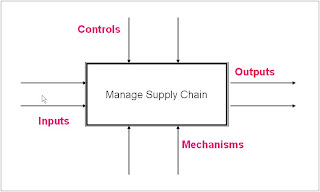 The purpose of this blog is to provide and discuss various topics around Supply Chain Management within the SAP SCM platform. By placing Supply Chain Management into context helps do define a structured approach in covering various SCM topics and provides a framework on how to maximize and exploit the SAP SCM tool. My experience in working in the Sap SCM environment is that in certain cases limited success has being achieved with the IT investment when implementing a SCM platform. In most cases it is not due to a SAP weakness but rather poor implementation, lack of vision and in certain cases lack of expertise. I have experienced costly multi million investment projects whereby all we did was replicate a legacy solution (in most cases homemade or Excel driven) within the SCM offering.
The purpose of this blog is to provide and discuss various topics around Supply Chain Management within the SAP SCM platform. By placing Supply Chain Management into context helps do define a structured approach in covering various SCM topics and provides a framework on how to maximize and exploit the SAP SCM tool. My experience in working in the Sap SCM environment is that in certain cases limited success has being achieved with the IT investment when implementing a SCM platform. In most cases it is not due to a SAP weakness but rather poor implementation, lack of vision and in certain cases lack of expertise. I have experienced costly multi million investment projects whereby all we did was replicate a legacy solution (in most cases homemade or Excel driven) within the SCM offering.A typical situation relates to a Parts Automotive manufacturer where the production planning and execution system had many shortcomings. This was reflected in two major indicators; 50% on time delivery and very high inventory: ‘Meaning, producing too much of the wrong stuff.’ This went on for many years whereby the typical IT approach was to maybe build a custom solution, a fancy report. Many external partners tried their luck, always same solution. The IT angle provided limited success.
Success was achieved by adopting a holistic approach between processes and the IT system in order to achieved the desired synergy:
o Re-design of manufacturing processes
o Lot size rules, change over tooling , sequencing logic. Processes and techniques that have nothing to do with SAP
o Modifying the SAP solution to consider critical process redesign:
o Modifying the logic around lot size rules
o Planning manufacturing considering key bottleneck resources in order to have realistic manufacturing scheduling (applying in the SCM solution Drum, Buffer Rope planning concept)
o Including buffer logic to protect key bottleneck resources
o Using sequencing logic that share similar tooling in order to minimize change over. Included building visual planning tables that allowed simple management
The above approach can be modelled within the modelling concept explained below.
In order to place SCM into context, I will adopt the IDEFØ methodology. Modelling SCM using IDEFØ approach help to organize the analysis of a SCM system. As an analysis tool, IDEFØ assists the modeler in identifying what functions/processes are performed, what is needed to perform those functions (mechanism/tools/resources), and what contols/constraints the process.
The basis of IDEFØ consists of the following when mapping processes:
o A process has inputs and outputs
o A process is constrained by controls. These controls could be constraints, legal requirements or o a business strategy, capacity. A IT system could be a constraint.
o A process is supported by mechanism (tools). Tools are resources (manufacturing, facilities and people) as well as a IT infrastructure. In certain aspect mechanisms adopted can become constraints on the effectiveness of a process.
Important to understand that process modelling plays an important role but has limitations, process modelling cannot optimize flow/movement. Optimizing flow and movement is also critical within the SCM, specifically in trying to optimize location (number of warehouse's) production process flow ect...
This blog's focus will revolve mainly around the SAP SCM system/mechanism (the SAP platform covering ERP and SCM)
The areas that are addressed with SCM area include: Planning, Execution and Control.
2 comments:
Awesome article. It is so detailed and well formatted, i enjoyed reading it as well as get
some new information too.
thank sharing information for more information please visit site
oracle fusion financials training
Thanks for sharing this Information. SAP SCM Training Course in Gurgaon
Post a Comment